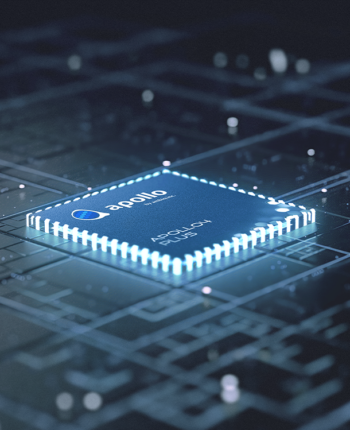Ambiq apollo sdk - An Overview
Ambiq apollo sdk - An Overview
Blog Article

This serious-time model analyzes the sign from an individual-direct ECG sensor to classify beats and detect irregular heartbeats ('AFIB arrhythmia'). The model is intended to have the ability to detect other sorts of anomalies which include atrial flutter, and may be continually prolonged and enhanced.
Allow’s make this additional concrete with an example. Suppose We have now some massive selection of photos, like the one.two million visuals in the ImageNet dataset (but Remember the fact that this could sooner or later be a significant selection of images or movies from the world wide web or robots).
Improving upon VAEs (code). In this work Durk Kingma and Tim Salimans introduce a versatile and computationally scalable method for improving the precision of variational inference. Especially, most VAEs have thus far been experienced using crude approximate posteriors, wherever every latent variable is independent.
Most generative models have this basic set up, but differ in the main points. Here are a few well-known examples of generative model approaches to provide you with a sense with the variation:
Some endpoints are deployed in remote destinations and should only have confined or periodic connectivity. For this reason, the right processing abilities has to be designed obtainable in the right position.
To take care of many applications, IoT endpoints demand a microcontroller-based mostly processing gadget that can be programmed to execute a wished-for computational features, including temperature or moisture sensing.
Transparency: Creating rely on is essential to buyers who need to know how their data is accustomed to personalize their activities. Transparency builds empathy and strengthens have confidence in.
Prompt: This near-up shot of the chameleon showcases its striking colour transforming abilities. The track record is blurred, drawing consideration into the animal’s striking visual appeal.
The new Apollo510 MCU is concurrently essentially the most Electricity-efficient and maximum-general performance solution we have at any time produced."
Quite simply, intelligence should be out there throughout the network many of the strategy to the endpoint in the supply of the data. By raising the on-unit compute abilities, we could far better unlock serious-time info analytics in IoT endpoints.
Examples: neuralSPOT consists of various power-optimized and power-instrumented examples illustrating the best way to use the above mentioned libraries and tools. Ambiq's ModelZoo and MLPerfTiny repos have all the more optimized reference examples.
Instruction scripts that specify the model architecture, educate the model, and in some cases, complete schooling-aware model compression for example quantization and pruning
Welcome to our weblog that should stroll you through the earth of remarkable AI models – different AI model forms, impacts on different industries, and great AI model examples in their transformation power.
As innovators keep on to invest in AI-driven alternatives, we can anticipate a transformative influence on recycling methods, accelerating our journey toward a far more sustainable planet.
Accelerating the Development of Optimized AI Features with Ambiq’s neuralSPOT
Ambiq’s neuralSPOT® is an open-source AI developer-focused SDK designed for our latest Apollo4 Plus system-on-chip (SoC) family. neuralSPOT provides an on-ramp to the rapid development of AI features for our customers’ AI applications and products. Included with neuralSPOT are Ambiq-optimized libraries, tools, and examples to help jumpstart AI-focused applications.
UNDERSTANDING NEURALSPOT VIA THE Smart watch for diabetics BASIC TENSORFLOW EXAMPLE
Often, the best way to ramp up on a new software library is through a comprehensive example – this is why neuralSPOt includes basic_tf_stub, an illustrative example that leverages many of neuralSPOT’s features.
In this article, we walk through the example block-by-block, using it as a guide to building AI features using neuralSPOT.
Ambiq's Vice President of Artificial Intelligence, Carlos Morales, went on CNBC Street Signs Asia to discuss the power consumption of AI and trends in endpoint devices.
Since 2010, Ambiq has been a leader in ultra-low power semiconductors that enable endpoint devices with more data-driven and AI-capable features while dropping the energy requirements up to 10X lower. They do this with the patented Subthreshold Power Optimized Technology (SPOT ®) platform.
Computer inferencing is complex, and for endpoint AI to become practical, these devices have to drop from megawatts of power to microwatts. This is where Ambiq has the power to change industries such as healthcare, agriculture, and Industrial IoT.
Ambiq Designs Low-Power for Next Gen Endpoint Devices
Ambiq’s VP of Architecture and Product Planning, Dan Cermak, joins the ipXchange team at CES to discuss how manufacturers can improve their products with ultra-low power. As technology becomes more sophisticated, energy consumption continues to grow. Here Dan outlines how Ambiq stays ahead of the curve by planning for energy requirements 5 years in advance.
Ambiq’s VP of Architecture and Product Planning at Embedded World 2024
Ambiq specializes in ultra-low-power SoC's designed to make intelligent battery-powered endpoint solutions a reality. These days, just about every endpoint device incorporates AI features, including anomaly detection, speech-driven user interfaces, audio event detection and classification, and health monitoring.
Ambiq's ultra low power, high-performance platforms are ideal for implementing this class of AI features, and we at Ambiq are dedicated to making implementation as easy as possible by offering open-source developer-centric toolkits, software libraries, and reference models to accelerate AI feature development.
NEURALSPOT - BECAUSE AI IS HARD ENOUGH
neuralSPOT is an AI developer-focused SDK in the true sense of the word: it includes everything you need to get your AI model onto Ambiq’s platform. You’ll find libraries for talking to sensors, managing SoC peripherals, and controlling power and memory configurations, along with tools for easily debugging your model from your laptop or PC, and examples that tie it all together.
Facebook | Linkedin | Twitter | YouTube